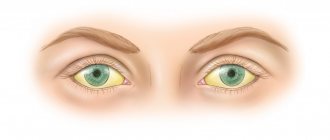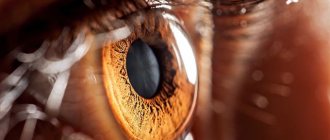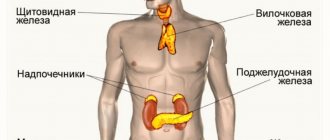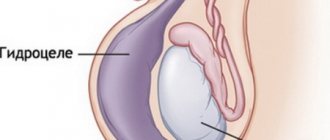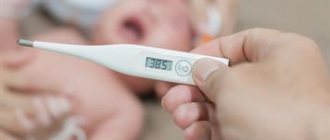Why does newborns' skin turn yellow?
The most numerous blood cells are erythrocytes. Their main function is to transport oxygen from the lungs to tissues and organs through the bloodstream. The protein that is part of the red blood cell and holds the oxygen molecule is called hemoglobin.
The average lifespan of red blood cells is 3-4 months. The process of disintegration of old blood cells and the formation of new ones occurs in the body constantly and continuously. As a result of the breakdown of red blood cells, hemoglobin is released from the cells and is transformed into bilirubin.
Free (indirect) bilirubin enters the liver cells through the bloodstream. There, with the help of special enzymes, it is converted into so-called bound (direct) bilirubin. Through the system of bile ducts, as part of bile, it enters the intestines and partially back into the blood, and is then excreted from the body along with feces and urine, coloring them a characteristic yellow color. Failure at any of the above stages causes the accumulation of excess bilirubin in the blood.
Since bilirubin is highly soluble in adipose tissue, its excess quickly and easily accumulates in the subcutaneous fat, causing staining of the skin and mucous membranes. For the same reason, a pronounced excess of bilirubin can accumulate in the tissues of the nervous system, causing symptoms of its damage.
Consequences of jaundice in newborns
During those few days or even weeks, while the level of the toxic form of bilirubin in a newly born child was elevated, nothing very bad could happen in his body. Although this pigment is toxic, its total amount is not enough to cause significant harm to the baby. However, with prolonged jaundice, when the “goldenness” of the skin does not go away even after three weeks, the baby should be under the supervision of a doctor. Continuous measurement of bilirubin levels is required.
If the amount of this pigment in the blood exceeds the norm by an order of magnitude (10 times) and constantly increases, the consequences for the child’s body (without proper treatment) can be bad. The “victims” will be the nervous system, liver and other organs.
Untimely or inadequate therapy can lead to bilirubin encephalopathy, which may result in the following consequences:
- hearing is significantly reduced;
- developmental lag behind peers;
- motor paralysis may occur.
Why do newborns develop jaundice so often?
The frequent occurrence of jaundice in newborns is due to the following reasons:
- the newborn has a large number of red blood cells in the blood, which helps prevent the development of hypoxia;
- The structure of hemoglobin in a fetus differs from the structure of hemoglobin in an already born baby and an adult. Fetal hemoglobin is called fetal hemoglobin. It has a greater affinity for oxygen and less resistance to changes in environmental conditions. Immediately after birth, there is an intensive breakdown of fetal hemoglobin and its replacement with “ordinary” hemoglobin. This sharply increases the amount of free hemoglobin, and then bilirubin in the blood;
- characteristic of a newborn, the immaturity of liver enzymes involved in the conversion of free bilirubin into bound bilirubin;
- lack of intestinal microflora in the newborn, which also takes part in the removal of bilirubin from the body.
Due to these features, normal bilirubin in a newborn is several times higher than in adults. In children who, during intrauterine development or childbirth, encountered certain traumatic factors (prematurity, fetal hypoxia, intrauterine infection, bleeding), the risk of jaundice increases.
General information
The term jaundice or icteric syndrome refers to icteric discoloration of the skin and mucous membranes.
This is an external manifestation of an increased content of bilirubin (bile pigment), which permeates the tissue (the term imbibition is used). This symptom occurs in many diseases in adults and newborns. Neonatal jaundice of newborns can be physiological and pathological (occurs in 1% of cases). Neonatal jaundice has an ICD-10 code from P58 to P58.9, including subcategories that explain its causes. The important thing is that icteric syndrome can be a manifestation of pathological conditions. The pediatrician’s task when jaundice is detected is to analyze the causes, other symptoms and laboratory indicators to choose the correct treatment tactics.
Physiological jaundice of newborns (sometimes the term postpartum jaundice is used) is considered a borderline, transient condition and occurs quite often. According to various sources, it occurs in 30-50% of full-term infants and in 70-85% of premature infants. The appearance of jaundice in newborns is associated with impaired bilirubin metabolism due to enzymatic immaturity of the liver. Bilirubin is a breakdown product of hemoglobin; in this case, after the birth of a child, fetal red blood cell hemoglobin undergoes breakdown and adult hemoglobin is formed instead. During the breakdown of hemoglobin, indirect bilirubin is formed. The process of death of red blood cells and the release of bilirubin occurs very intensively, and the functional ability of the liver to bind and convert it directly is limited. The final formation of liver enzyme systems occurs by 1.5-3 months of life. Since the binding capacity of the liver is small, the concentration of bilirubin gradually increases.
Skin coloring in an infant appears when bilirubin increases from 60 µmol/L to 120 µmol/L, and in a premature baby the maximum limit is 85 µmol/L. First of all, the sclera of the eyes, the palate, the surface of the tongue from below, and the face are painted more easily. Some experts attribute physiological jaundice to features of the baby’s adaptation to the environment and it is believed that within 2-3 weeks it will go away on its own without treatment. But in premature babies this process is delayed, so premature babies need treatment and special care.
What is physiological jaundice of newborns?
Up to 90% of the total number of jaundices are physiological. This means that they do not require medication correction, do not harm the child’s health and go away on their own over time.
Features of physiological jaundice are:
- the appearance of signs of jaundice no earlier than 2-3 days of life. Earlier onset of symptoms often has an unfavorable course;
- increasing manifestations by the end of the first week of life;
- the duration of the course is no more than 2-3 weeks. If jaundice persists, it makes sense to look for the cause;
- low intensity of skin coloring. Physiological jaundice is characterized by a change in skin color on the face and torso, as well as staining of the sclera. In this case, the baby’s arms and legs usually remain pink;
- no other symptoms other than skin coloring;
- no change in the color of urine and feces;
- no changes in the general blood test;
- in a biochemical blood test, the level of blood bilirubin increases due to indirect. At the same time, the level of liver enzymes (ALT, AST) remains normal;
- The blood bilirubin level never reaches critical values sufficient for the development of neurological disorders.
Tests and diagnostics
- To study the dynamics of bilirubin in physiological jaundice in the maternity hospital, a percutaneous bilitest is used, showing the total value of bile pigment. If a pathological variant of jaundice is suspected, it is important to determine not only the total value, but also its fractions (direct, indirect), alkaline phosphatase, transaminases, total protein, gammaglutamyl transpeptidase.
- Jaundice staining associated with liver immaturity is characterized by an increase in total bilirubin and indirect fraction.
- In newborns with a persistent increase in bilirubin that lasts 3-4 weeks, a test for galactosemia .
- If hemolysis , the number of red blood cells, microcytes, hemoglobin, hematocrit, and reticulocytes is determined. The blood type and Rh factor of the mother-child are also determined, which makes it possible to establish hemolytic disease in the newborn.
- If there is jaundice in the family caused by a deficiency of the enzyme glucose-6-phosphate dehydrogenase, the level of this enzyme is determined.
- Examination for the presence of sepsis (bacteriological blood test).
- hypothyroidism is suspected, thyroid hormones should be examined.
- An ultrasound of the biliary tract and liver is performed.
- Drug hemolysis - an increase in the total amount and indirect fraction, and the level of hemoglobin also decreases.
- Yellowness from mother's milk - mother's milk shows an increased content of pregnane-3-alpha and fatty acids.
All these examinations are necessary because the differential diagnosis of jaundice is carried out. For example, biliary atresia is manifested by obstructive jaundice and at the same time direct bilirubin increases. Differential diagnosis helps to suspect this type of jaundice, and ultrasound confirms the diagnosis. A characteristic sign of obstructive jaundice, which appears in the 2-3rd week, is an enlarged liver, a yellowish-greenish tint to the skin, and discoloration of stool.
Is it necessary to treat physiological jaundice?
Physiological jaundice in newborns does not require treatment with medications, but you should adhere to some recommendations:
- A nursing mother needs to put her baby to her breast more often and not take long breaks between feedings. This promotes normal bowel movements in the child, and most of the bilirubin is excreted from the body in feces;
- bottle-fed babies also require frequent feeding with small portions, with mandatory supplementation with water.
How to do phototherapy at home
At the KIM clinic, we can give you a hammock lamp to take home for the entire duration of treatment for jaundice. It's very easy to use:
- The child is placed in a hammock so that the body is above the lamp and the head is outside the translucent fabric.
- The baby is secured in the hammock with special cords to prevent light from entering the eyes.
- The irradiator is connected to the network and configured (time and irradiation intensity are set).
- After the sound signal, the lamp is turned off and the child is taken out of the hammock.
Phototherapy should be carried out only after consulting a pediatrician, since there are contraindications for any medical procedures. Our specialists will advise you on all your questions and show you how to use the lamp.
Why does jaundice last?
In some cases, jaundice may be more severe: with higher levels of free bilirubin and/or lasting up to 3-4 months. There are several reasons for this:
- A reduced volume of breast milk or formula, and nutritional deficiencies immediately after birth somewhat worsen and prolong the course of jaundice.
- Fully breastfeeding in the first months of life can prolong the period of jaundice and increase bilirubin levels. This condition is called breast milk jaundice.
The cause of “breast milk jaundice” is still not clear. You can talk about such jaundice if it:
- delayed longer than 1-2 months of life;
- bilirubin level remains above 170-180 µmol/l;
- there is a tendency to a slow decrease in bilirubin;
- temporary withdrawal of breastfeeding leads to a sharp decrease in blood bilirubin.
Both conditions are safe for the baby and do not require treatment. In case of breastfeeding jaundice, in rare cases, with very high blood bilirubin levels, the doctor may recommend a temporary refusal of breast milk. However, in the vast majority of cases this is not required. Neither Russian nor international clinical recommendations recommend weaning such a baby.
Classification
All jaundice of the newborn period are divided into:
- Conjugative.
- Hemolytic.
- Mechanical.
Conjugation jaundice of newborns is caused by a violation of the binding (conjugation) of bilirubin by liver cells. The ICD-10 code for this type is P59.9 (neonatal jaundice, unspecified). There are several types of conjugation jaundice:
- Physiological.
- Hereditary ( Gilbert / Luceus-Driscop ).
- Jaundice of prematurity.
- Medication.
- In children who are breastfed.
- Associated with asphyxia .
- Associated with endocrine pathology.
- Associated with impaired conjugation during pyloric stenosis and intestinal obstruction .
In the vast majority of cases, newborn jaundice is physiological and a transitional condition of the newborn. Postpartum jaundice is associated with enzyme deficiency of the liver, which is gradually restored and, along with this, the icteric staining of the skin and sclera disappears. Transient conjugative jaundice occurs in 60-70% of babies. Jaundice gradually increases, reaching a maximum on the 3-4th day. The increase in bilirubin is no more than 85 µmol per day and for all days of the increase it does not rise more than 204 µmol/l. After this, from the 4th day there is a decrease in its level and, accordingly, the intensity of jaundice.
In premature infants the course is more severe and longer (up to 3 weeks). Jaundice of prematurity is characterized by an early onset (1 day), which may resemble a hemolytic disease, but laboratory data (absence of reticulocytosis, normal hemoglobin, red blood cell count, blood groups of the mother and child) help make the correct diagnosis.
Toxic jaundice (drug-induced) is associated with drug-induced liver damage. The drug in the liver triggers metabolic reactions involving enzyme systems. The most hepatotoxic drugs are those that are intensively metabolized in the liver. In this case, damage to liver cells, disruption of bilirubin metabolism and cholestasis .
“Breast milk jaundice” (pregnane) has been described in breastfed infants. It is believed that its cause is low binding (conjugation) of bilirubin, due to the inhibition of this process by estrogens contained in the blood and milk of women. Estrogens displace bilirubin from the complex with glucuronic acid. In this case, there may be two peaks in the rise of bilirubin - day 5 and day 14-15. For diagnosis, milk is withdrawn for 2-3 days, and the icteric coloring is resolved. Or the baby is fed with expressed milk, heated to 60 C and cooled. Heat treatment significantly reduces estrogen activity. The duration of this type of jaundice is from 4 weeks to 3 months if the child is in good condition. Hyperbilirubin encephalopathy is not recorded. If the bilirubin level is less than 256 µmol/l, no measures are taken; if it is more than 256 µmol/l, phototherapy is carried out at home and breastfeeding does not stop.
Hemolytic jaundice is associated with increased production of bilirubin, which occurs with hemolytic disease , hemorrhage , polycythemia , ingestion of blood, drug hemolysis (overdose of vitamin K, use of oxytocin in a pregnant woman and sulfonamides). With the massive breakdown of red blood cells, a large amount of bile pigment is formed, and the liver cannot utilize it. In hemolytic disease, staining is visible already on the first day, gradually increasing by 5-6 days. It is more common in low birth weight newborns with central nervous system damage. With hemolytic jaundice, indirect bilirubin increases in the blood and anemia .
With parenchymal jaundice, the jaundice syndrome appears early and proceeds in waves; an enlargement of the spleen and liver and hemorrhagic syndrome (hemorrhages, bruises) are also noted. Urine is dark yellow, and feces are periodically discolored. Parenchymal jaundice is characterized by an increase in liver enzymes (transferases increase 8-10 times), as well as a decrease in blood albumin and fibrinogen.
Obstructive jaundice is caused by a violation of the excretion of conjugated bilirubin through the bile ducts into the intestine. This condition can be observed with defects of the biliary tract ( polycystic disease , atresia ), torsion and kinks of the bladder, a decrease in the number of bile ducts, thickening of bile, cystic fibrosis , compression of the biliary tract (infiltration, tumor). Often there is a blockage of the bile duct with a stone in congenital cholelithiasis . Obstructive jaundice is characterized by an increase in direct (bound) bilirubin. In this case, the color of the skin has a yellow-greenish tint. Babies have an enlarged liver, discolored feces and intensely colored urine. Obstructive jaundice is not that common and requires surgical intervention. Code of obstructive jaundice according to ICD-10 K83.1.
Cholestasis as a cessation of bile outflow (complete or reduced) or a violation of its formation. A manifestation of cholestasis is cholestatic jaundice . Cholestasis can be extrahepatic and intrahepatic.
Obstruction of the extrahepatic ducts is observed when:
- bile duct cysts;
- cholelithiasis;
- tumors of the bile ducts;
- narrowing of the bile ducts;
- atresia of extrahepatic ducts;
- bile duct stenosis;
- bile plugs.
extrahepatic cholestasis occurs , they speak of obstructive jaundice . Intrahepatic cholestasis is associated with the following causes: TORCH infections , viral infections, fetal hepatitis due to toxoplasmosis or cytomegalovirus infection , sepsis , cystic fibrosis , hemochromatosis , bile thickening , galactosemia .
Cholestatic jaundice is manifested by an increase in conjugated bilirubin, alkaline phosphatase, bile acids and cholesterol. In newborns, it is necessary to exclude biliary atresia, in which damage to the bile ducts (intra- and extrahepatic) rapidly progresses, leading to liver fibrosis.
Decompression of the biliary tract is performed surgically. The operation is performed up to 40-50 days of life. This helps reduce symptoms and delay complications. Transient cholestasis may be associated with iatrogenic factors of the perinatal period. Cholestasis leads to insufficient bile supply, impaired fat breakdown and absorption, growth retardation, and poor absorption of fat-soluble vitamins.
In pathological jaundice, an increased content of indirect bilirubin, which is a neurotoxic poison, causes bilirubin encephalopathy , and its severe form is kernicterus of newborns (the subcortical nuclei are affected). Premature babies who have suffered hypoxia or have low levels of sugar and albumin in the blood are especially susceptible to this complication.
Unconjugated bilirubin passes through the blood-brain barrier and affects brain cells, disrupting their metabolism and causing degenerative changes. The threshold bilirubin concentration for full-term newborns is 340 µmol/l, and 170-180 µmol/l for premature infants. This difference is explained by the fact that premature infants have increased barrier permeability and immature brain cells are very sensitive to toxic effects. Kernicterus most often occurs in the first week of life, when the permeability of the barrier is very increased; at an older age, the likelihood of its development is much less.
Carotene jaundice (synonyms pseudojaundice or false) is an icteric staining of only the skin (not mucous membranes!) due to the accumulation of carotenes . Carotene is a dietary source of vitamin A and is present in all yellow-orange fruits and vegetables. It often happens that due to prolonged consumption of large quantities of carrots, pumpkins or oranges, the skin turns yellow, especially in places where there are many sweat glands - the face, palms and feet. The absorption of carotene increases when consuming pureed foods - children's canned vegetables and fruits. Therefore, carotene jaundice is more common when complementary foods are introduced. Carotene is excreted slowly, so you shouldn’t count on a quick effect immediately after eliminating orange foods from your child’s diet. Since carotene passes into breast milk, it can also occur in infants.
What is hemolytic disease of the newborn?
Only 10% of all jaundices are pathological. This means that they may require more careful monitoring of the newborn, additional examination and treatment. In approximately 1% of newborns, jaundice is caused by hemolytic disease of the newborn (HDN).
Why does HDN occur? The reasons are differences in blood group, Rh factor or other factors of incompatibility between the blood of the fetus and mother. So, HDN occurs if:
- a Rh-negative mother has a fetus with Rh-positive blood;
- The mother has blood type 1, and the baby has 2 or 3.
Such differences lead to the formation of substances in the mother’s blood that destroy the red blood cells of the fetus. As a result, excessive amounts of hemoglobin and then bilirubin are released into the fetal blood.
How does HDN occur?
Features of the course of HDN are:
- earlier (as early as 1 day) onset of jaundice;
- the ability to achieve higher (sometimes critical) bilirubin numbers;
- high intensity of skin coloring;
- the presence of other symptoms - swelling, enlargement of the liver and spleen, lethargy, refusal to eat;
- possible addition of neurological symptoms;
- presence of anemia in a blood test;
- positive Coombs test.
HDN can be either mild or quite severe. As a rule, jaundice is easier when there is blood group incompatibility, and more severe when there is incompatibility according to the Rh factor.
Forecast
The physiological form of jaundice has a benign course: by the end of the first week, the activity of liver enzymes increases and with proper care (breastfeeding, drinking water, creating a comfortable environmental temperature), the level of bile pigment gradually decreases, reaching normal by the end of the second week. In aggravating circumstances ( hypoxia , prematurity , hereditary deficiency of enzyme systems, use of vitamin K , sulfonamides, NSAIDs, cephalosporins, chloramphenicol), the level of bilirubin rises to dangerous levels. In this case, complications are possible and the treatment process itself is delayed for several months.
What is the treatment for TTH?
Most often, phototherapy is used to treat tension-type headache: the newborn is placed for a while under a lamp emitting light of a certain wavelength. As a rule, phototherapy is well tolerated by babies, but in some cases it can cause dry skin and mucous membranes. Therefore, frequent breastfeeding and additional fluid administration are recommended for children undergoing phototherapy. The duration of phototherapy depends on the level of bilirubin in the blood.
Less commonly, HDN is treated with medications, red blood cells, or intravenous immunoglobulin preparations. In exceptional situations, a replacement blood transfusion is performed. These manipulations are carried out only in a hospital setting.
In some cases, with mild HDN, treatment is not required.
Possible complications
Treatment of jaundice in a newborn
Most often, jaundice goes away without consequences, but if the child already has congenital problems, complications are possible. In the case of Rh conflict between mother and child, the level of bilirubin in the blood rises quickly, which affects the brain. The most common complication of kernicterus is damage to the central nervous system, leading to cerebral palsy, as well as encephalopathy, expressed by increased intracranial pressure, cerebral edema, cysts, cerebral hemorrhages, and brain immaturity.
A fairly rare and most undesirable consequence is death. Kernicterus occurs in 4 stages:
- Oppression. The child becomes lethargic, apathetic, and does not breastfeed well.
- Excitation. The baby screams, arches his back, throws his head back.
- Imaginary well-being. There comes a period of calm when mothers think that everything is over and the child has finally recovered. However, this is not the case.
- Complication. The last stage is the most severe, when the bilirubin attack attacks brain cells, often resulting in cerebral palsy.
- Kernicterus requires effective treatment and constant monitoring. In the most severe cases, a replacement blood transfusion is performed. Such children need constant supervision by a neurologist, as well as rehabilitation and therapy that will help restore impaired body functions as much as possible.
- If a mother and child have a Rh conflict or a conflict of blood groups, complications in the form of a deep disturbance of metabolic processes can appear even before birth, in some cases this leads to intrauterine death.
One of the possible complications of severe jaundice is intravascular hemolysis, or in other words, decreased blood clotting, which is dangerous due to bleeding. If jaundice is caused by biliary atresia (complete blockage) and is detected early, the only treatment option is surgery.
Other causes of jaundice in a newborn
Other reasons are extremely rare. These include:
- Increased destruction of red blood cells due to medications, bleeding, or hereditary diseases. In this case, the clinic of the underlying disease comes to the fore, and jaundice acts as an additional symptom.
- Rare genetic abnormalities that interfere with the functioning of liver enzymes. Some of them undergo screening tests of newborns in the maternity hospital. As a rule, jaundice is not their only symptom.
- Impaired bile outflow associated with the abnormal structure of the biliary tract. For example, jaundice can occur due to congenital blockage of the bile ducts. Such jaundice is manifested by an increase in symptoms by 1 month of life, a characteristic greenish skin color, discoloration of feces and darkening of urine, a predominance of conjugated bilirubin in the blood, and the appearance of neurological symptoms. It is easily diagnosed by ultrasound of the abdominal cavity. Requires surgical treatment!
